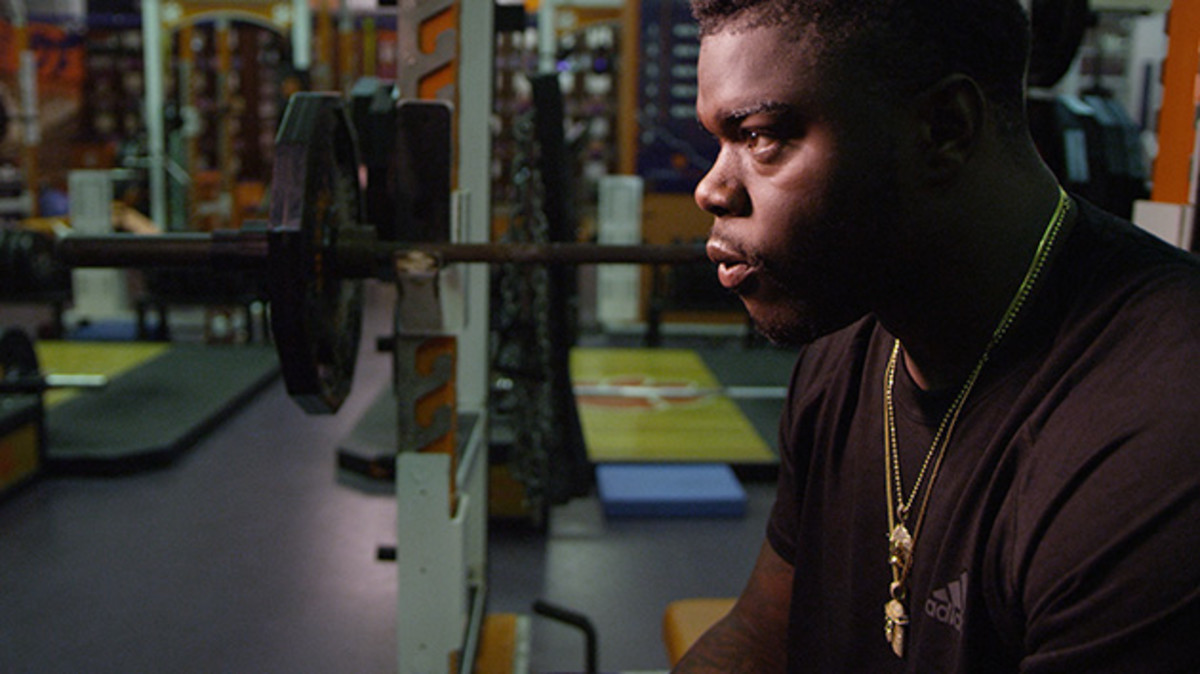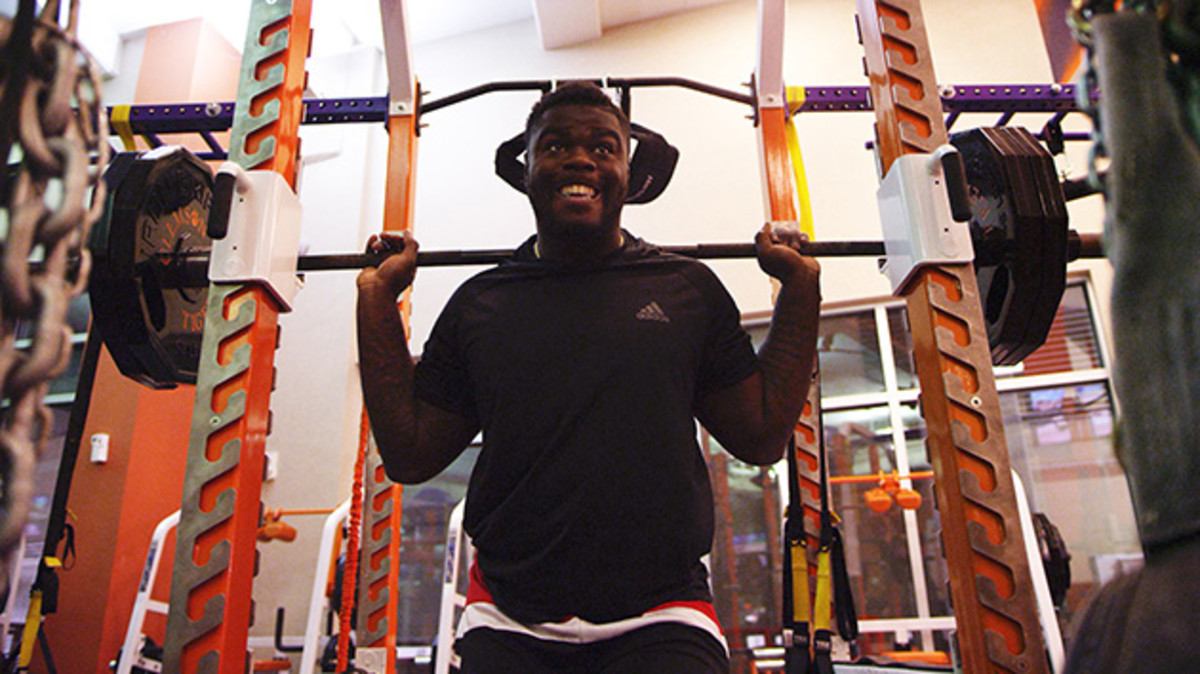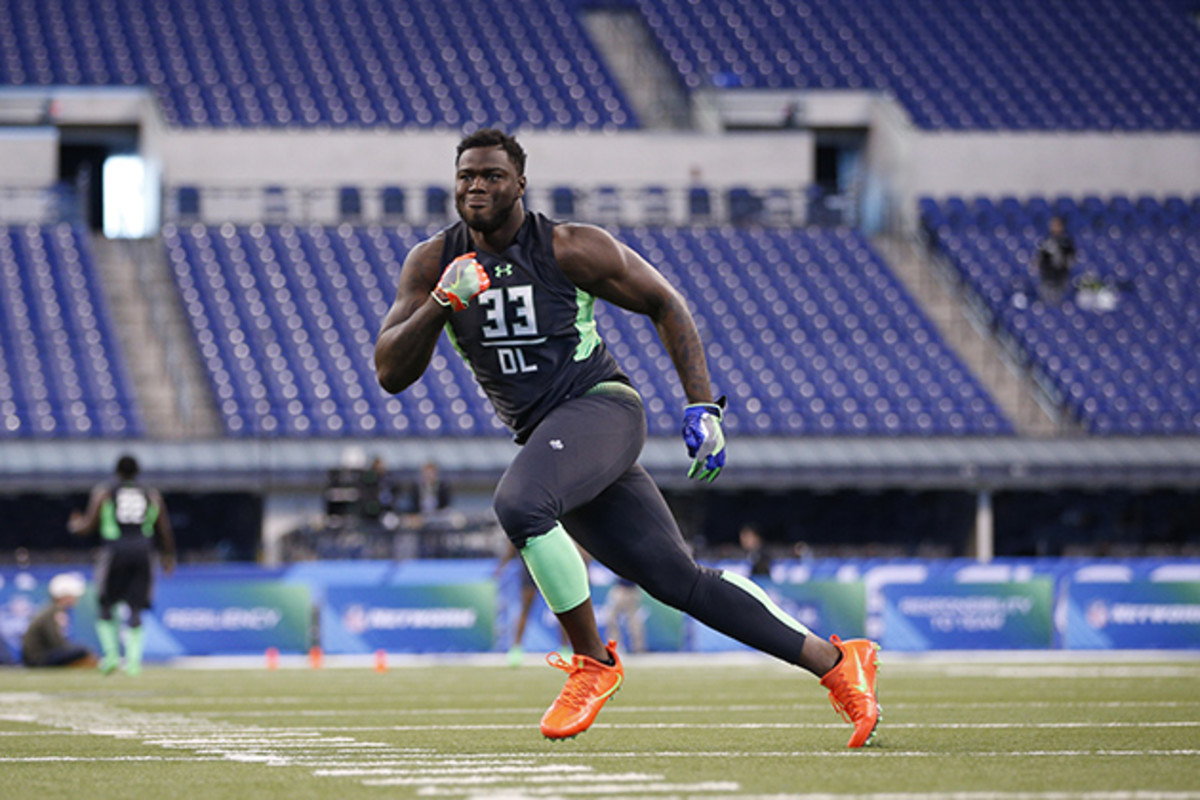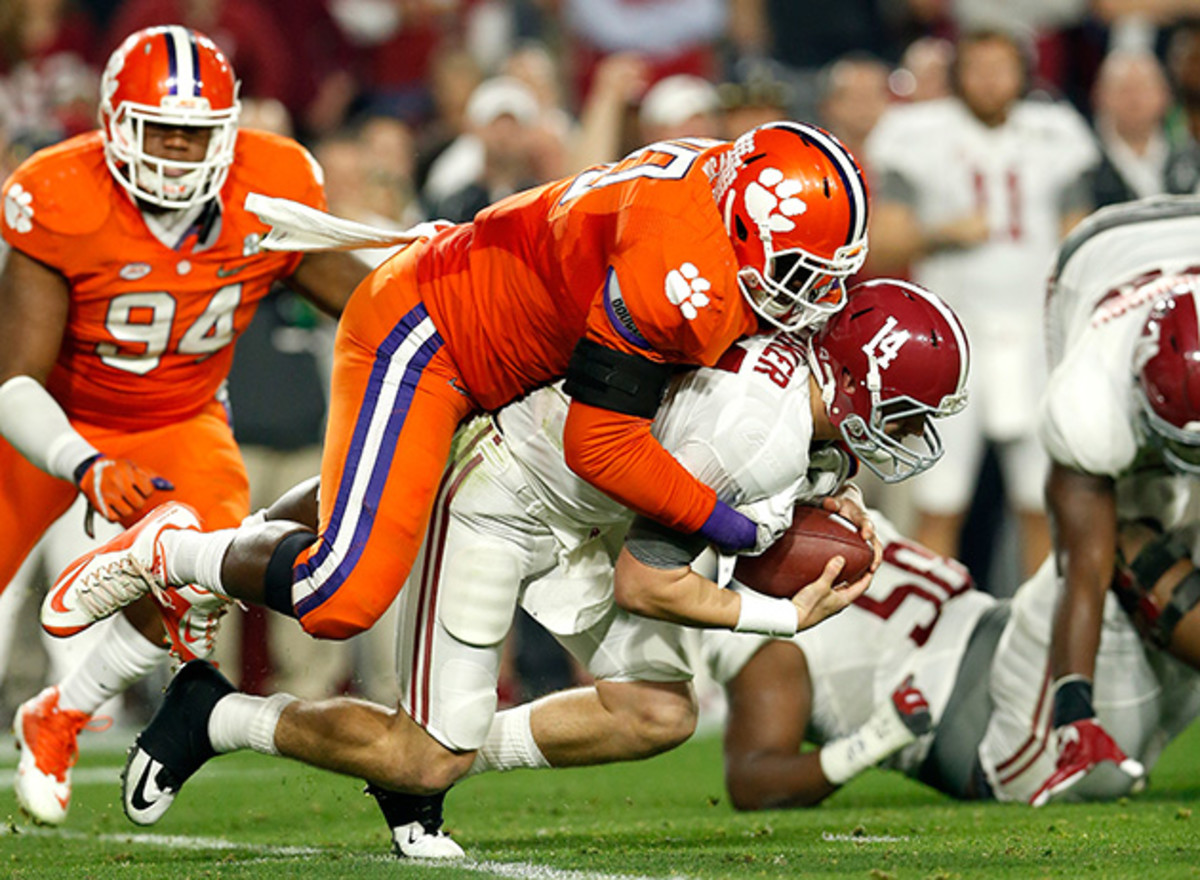Training with Shaq Lawson: Clemson DE's keys are hips and hands

CLEMSON, S.C. – Every time Shaq Lawson feels a lull in between lifts, the former Clemson defensive end keeps his hands moving. Lawson faces up to a nearby pillar, squats low and flips his hands back and forth on either side, swatting at the arms of imaginary offensive linemen. The movement is strategic for Lawson, a way to work on his technique and keep his body on the move in the weight room.
“I can be sitting around in the weight room and I’ll see a pole here and just flip my hands,” Lawson says. “It’s getting my hips and hands going at the same time. Every time I’m in the weight room, I’ll do that.”

It’s a rainy morning at Clemson, and Lawson, sporting a black workout shirt and gym shorts, is making his way around an empty weight room at Memorial Stadium. Lawson has spent the last few weeks training for the NFL draft, where he’s projected as a high first-round pick on most draft boards. Experts rave about Lawson’s hand and footwork and his versatility, but his explosiveness and pass-rushing abilities could improve. That’s why Lawson has returned to train at Clemson, where he amassed 35 solo tackles, 12.5 sacks and 24.5 tackles as one of the most menacing defensive linemen in college football in 2015.
SI 50, No. 15: Clemson’s Shaq Lawson
Joey Batson, Clemson’s longtime director of strength and conditioning, says his staff works to prepare its players for an NFL future when they first step on campus. “I tell our players all the time, your body is your business,” Batson says. “You’ve really got to take care of it. Learning how to manage your weight, get the proper rest, hydrate, learning how to eat and learning how to rest. At the end of the day, as long as you’re playing, you’re getting paid.”
These days a typical workout for Lawson begins with a solid session of on-field work. He’ll spend 10 minutes doing reps of “get-offs,” in which he lines up in a three-point stance and bursts off the ball on a snap count. Then Lawson jumps into reps of bag drills—his favorite—to hone his speed and acceleration and work on the position of his hips. He’ll throw in reps of lateral drills and shuffle-jumps before finishing on practicing dummies. There Lawson can focus on his hand placement and hip work, keeping his eyes up while staying low and improving his hip explosion.

In the weight room, every Clemson player starts with a “core” set of lifts: normal squats, pulls and presses. Later things get more specific depending on position group. Batson says defensive linemen work to develop two types of strengths: absolute strength, a one-rep, maxed-out raw lift, and speed strength, an ability to move from zero to 60 in minimal steps. Defensive ends, in general, focus more on upper-body strength and hip flexibility. Batson even pulls ends into linebacker training “for that ability to drop, turn, cut, burst, cover and be able to play a little bit in space,” he says.
The bulk of Lawson’s lifts at Clemson hit on both absolute and speed strengths, and the same is true for his pre-draft training. He dives into platform lifts with different styles of squatting and adds bands for necessary resistance. The bands help Lawson fine-tune his deceleration, a key attribute for defensive ends who must roll their hips. He also throws in ab workouts to maintain his core.

But Lawson’s draft training differs slightly from his college workouts. The lifts remain similar, with the same core principles, but the Batson says he trains his Clemson athletes for a three-to-four year college career—or, as he calls it, the Daytona 500. Lawson’s current training is framed for singular events like the NFL Combine or the Draft—or quick drag races, Batons says. Because Lawson has already filled out his 6’3”, 269-pound frame, the emphasis isn’t on adding muscle; it’s about fine-tuning techniques that will help at the next level.
That’s why Lawson routinely works out with 60-75% his max weight, instead of the regular 90-95% while at Clemson. “In school, you’re lifting a lot heavier, squatting a lot heavier,” Lawson says. “That’s trying to get you ready for a season, getting you your team bonding. Now it’s more individual, getting us right with the little things, the technique.”
#https://instagram.com/p/BBYvpxkLPzS
Off the field, Lawson focuses on eating “clean” foods. His primary meals involve grilled chicken, fresh fruit and vegetables. He has cut fast food almost entirely from his diet. Lawson has learned to ask himself a simple question before each meal: Am I eating for purpose or for pleasure?
Meanwhile Lawson has learned when to load on carbs and proteins to help recover after a workout. Extra supplements, such as fish oils or cherry juice, can also help cut down on inflammation after training. “The trauma of training is so great, the recovery is equally or more important,” Batson says.

This arduous process has one end goal: Make Lawson the best defensive end prospect in the 2016 NFL draft. When he’s not training, he likes to pop in film of his own Clemson career—particularly the bad plays, he says, so he can truly critique his game. That’s the only way Lawson feels he can mirror versatile players like Von Miller and Demarcus Ware, defensive studs who have managed to forge successful pro careers. It’s the little things that Lawson hopes will ultimately define him on draft day.
“Technique,” Lawson says, “is really the big part of being a successful defensive end in the NFL.”
